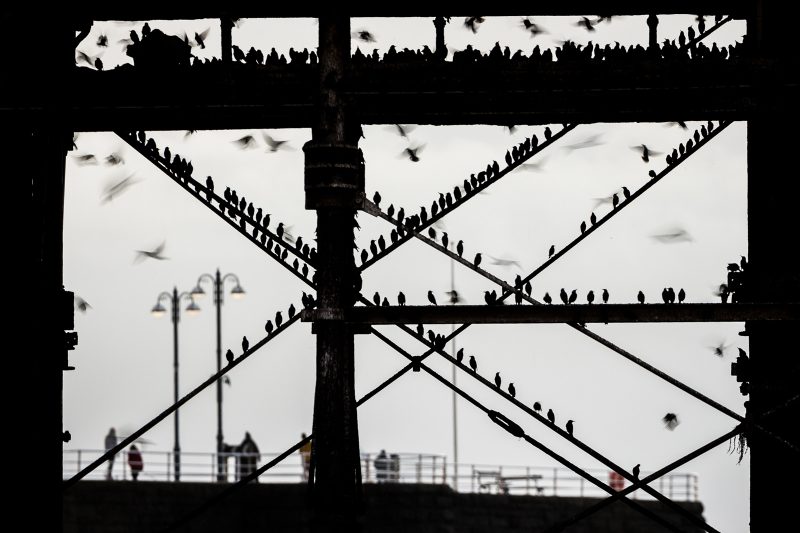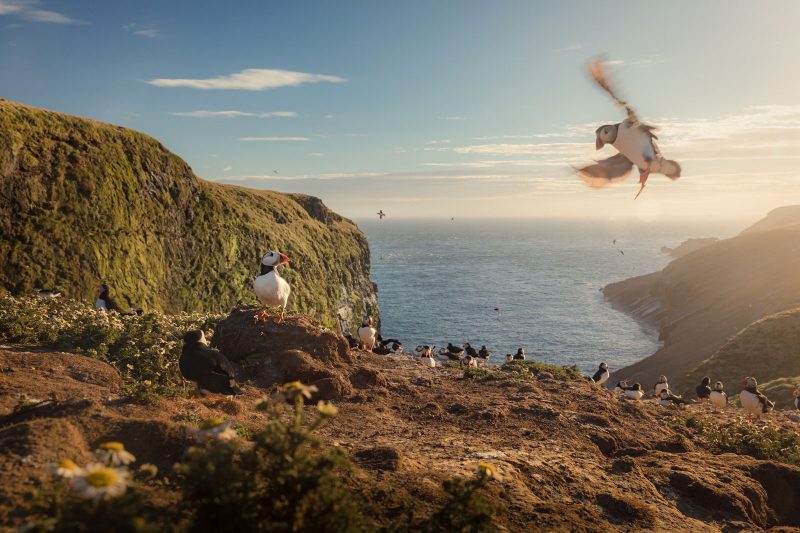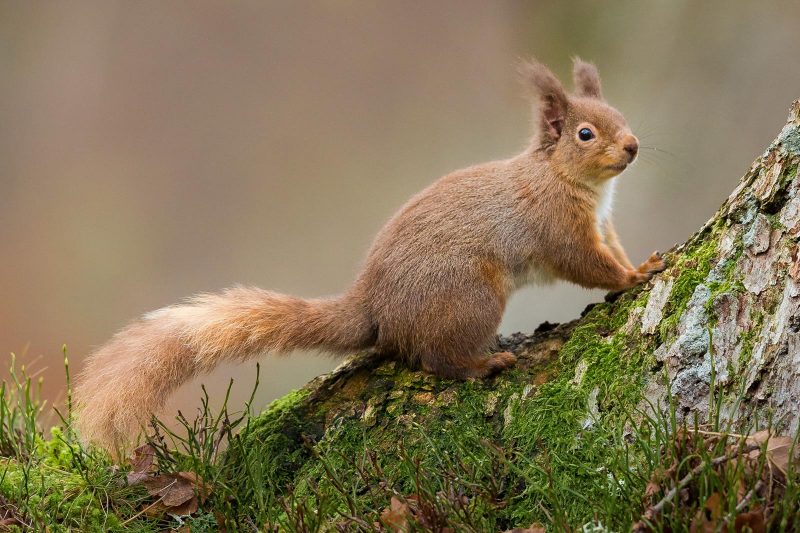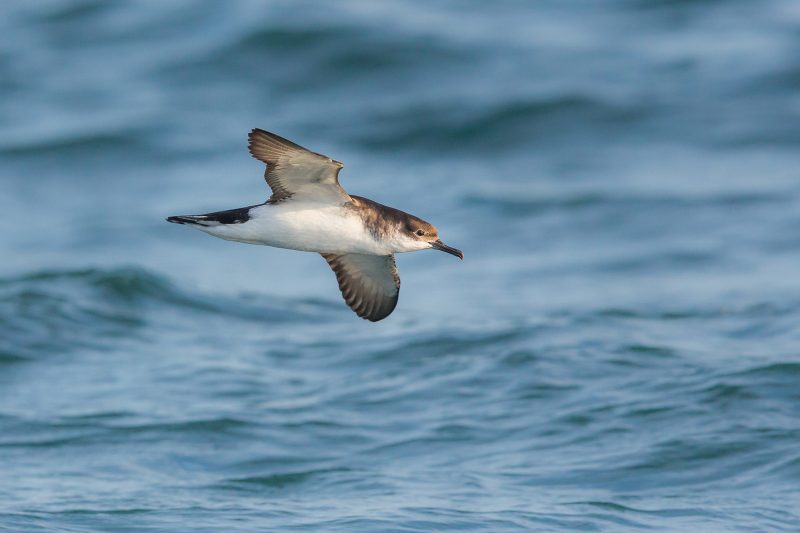Where to Photograph Wildlife in Wales

The diversity of Wales’ landscape is reflected in its wildlife. For a relatively small area, Wales boasts an abundance of plants, animals, and birds that thrive within the variety of habitats, from sea to summit. Throughout the year, the country is home to rare migrating birds like ospreys, and you can also witness the feeding frenzies of red kites in mid Wales. You can even hop on a boat trip around one of the best places in the UK to see puffins and porpoises.
Furthermore, Wales is home to the largest Manx shearwater colony in the world: it really is a wildlife hotspot waiting to be explored! As always with lists such as this, the species and locations mentioned are not meant to be exhaustive of where to photograph wildlife in Wales. Instead, it is more of a selection of personal favourites and must-see highlights. Either way, choose just one of the locations below and you will have an amazing experience in a stunning environment.


Wildlife photography tips
1. Isolate the subject
Personally, I think the best wildlife portraits are those in which there is subject isolation and no distracting elements in the background. This is where the aperture settings and depth of field come in useful. Use a wide aperture (e.g., f/2.8 or f/4, etc.) on a long lens to help naturally blur the foreground and background, and also drop to the subject’s eye level if you can.
An extra tip to create added depth in your photos: obscure the subject slightly by photographing it through naturally occurring foreground or plants.
2. Use a single focus point
For autofocusing on static subjects, use a single focus point rather than a larger array of autofocus points. This helps to pinpoint in the frame what you want to be in focus. With animal portraits your focus point should be the eye. As usual in the great outdoors, this can be tricky as any wind will blow the lens hood around (if handholding). So to combat camera shake, use something like a beanbag or monopod.
For moving subjects, try to choose an autofocus zone or region that matches the size of your subject if possible. That way, it should not result in any mis-focused images.
3. Bring a wide-angle lens
It is great fun to reach for the longest lens possible and shoot tight wildlife portraits. However, on most occasions the images will not convey the animal’s habitat. You may find that the landscape around the animal can be just as interesting, so always remember to pack a wide-angle lens in your bag too.
It will not add much extra weight and will be exceptionally useful if your subject is tolerant enough for wider views, or for photographing habitat images.
4. Respect your subjects
Always remember to avoid affecting or impeding any movement of wildlife for a photograph. Once you are happy with your images, always leave animals in peace, retracing your steps carefully until there is some distance between you. This will leave you safe in the knowledge that your presence caused no stress to the animal.
Red Squirrels
In the north west of the country, you will find Anglesey. This small island is not only famed for its beautiful beaches and characterful lighthouses, but is also one of the strongholds of red squirrels in Wales.
Thanks to conservation work with habitat improvement, controlling grey squirrel numbers, and several release programmes, the native ‘reds’ have flourished at Newborough forest. In the last twenty years, the red squirrel community has also expanded to many other sites across the island.
The coniferous woodlands around areas such as the Menai Strait, Plas Newydd and Pentraeth are good places to look for them, as well as my favourite: Newborough forest. It is one of the best places to see them on the island and there is there is a small viewpoint devoted to spotting them.
Visit early, and you may catch a squirrel on the custom-made feeders, or generally bounding along the grassy areas and up tree trunks. It’s also worth a visit to see many other species of woodland birds, such as nuthatches and treecreepers.
Location: Llyn Parc Mawr Community Woodland, LL62 5BA
OS Grid Ref: SH413670
Black grouse
More synonymous with the highlands of Scotland, black grouse are one of the UK’s most stunning birds. You will find a small population on the upland moors near Wrexham.
The RSPB runs guided grouse lek walks here every spring; as black grouse are a protected Schedule 1 licensed bird, it is best to tag along on one of these walks and view the birds from their hide.
Black grouse are known as the ‘ghosts of the forest’, and for good reason. Around April time every year, just before dawn, the males seemingly appear from nowhere to strut their stuff and battle with one another at gatherings known as ‘leks’.
This starts at first light, and the eerie bubbling and clucking calls are the only sounds to be heard. On the bleak moors you can just make out the white tail feathers moving around in the half-light. After a while, more males may fly into the lek sites (the small clearings where male birds square up to one another).
Then the posturing begins, and before long the battle commences in a sumo-wrestling kind of style, sometimes with claws and beaks involved. They also stick their tail feathers out in order to make themselves look wider. As the sun starts to climb and the victor struts off with his female, the so called ‘black’ grouse are an almost-iridescent blue in the right light, punctuated only by the flash of red on the eyebrow. They really are amazing looking birds, and a springtime lek is a must see for anyone.
Location: Coed Llandegla Forest Centre, nr Wrexham, LL11 5UL
OS Grid Ref: SJ239523
Seabird season
Another unmissable wildlife spectacle is the experience of the cacophony of a seabird colony in summer. You will find many areas to witness this along the western coast of Wales, but you would be hard pushed to better the seabird colonies found on the islands of Skomer and Skokholm. Out of the two, Skomer island is easier to access thanks to daily boats trips throughout the year.
Between the months of April and August, thousands of seabirds find their way to these islands off the Pembrokeshire coast to breed and raise their young. Skokholm and Skomer boast an array of breeding birds and seabirds, including most species of gull, fulmar, razorbill, guillemot, and the iconic puffin.
Read more: How to Photograph Puffins
These islands are also the most important site in the world for Manx shearwaters. They migrate from Argentina to breed here and, once the chicks hatch, the ‘Manxie’ population stands at almost one million individuals – that’s around sixty percent of the world’s population!

So, unless you stay on the islands overnight, you probably won’t see any. But don’t worry: on a day trip you’ll be able to make do with the characterful puffins instead!
Location: Skomer Island – boat trip from Martin’s Haven, SA62 3BJ
OS Grid Ref: SM761089
Red kites
With a large five-foot wingspan and delta shaped tail, the red kite is an unmistakable shape in the skies over Wales. Being a scavenger, it can cover miles without a wing beat, quietly and effortlessly soaring through the air over the landscape below. However, only a few hundred years ago, these beautiful birds were on the edge of extinction due to persecution and hunting.
Thankfully, over time, conservation movements set up in the early twentieth century started to protect them. Together with reintroduction programmes towards the end of the century, this helped these birds spread out from Wales into Scotland and England, boosting the UK population.
Gigrin Farm, located in the rolling hills of mid Wales, is one of my favoured haunts. Set up in the early 1990s, it has helped red kite populations increase massively through bird rehabilitation and supplementary feeding. The daily feeding continues to this day, and it is a superb experience to witness the wildlife spectacle of hundreds of red kites in the skies over the Welsh landscape.
Over the last decade or so, custom-built hides have been installed near the feeding area for birdwatchers and photographers to see the action close up. There is lots of potential for great photographs to be taken here. Be wowed by the aerial acrobatics of the red kites as they turn and dive down to pick up scraps of food.
On any given day there can be around 200 or more birds in the sky at once, but I recommend visiting in winter, when there is snow on the ground and natural food is scarce. I have seen over 600 birds present in these conditions – an utterly amazing spectacle!
Location: Gigrin Farm Red Kite Feeding Centre, LD6 5BL
OS Grid Ref: SN979677
Seals
As one of the largest mammals in the UK, and the largest of our native seals, grey seal populations in west Wales are doing very well. When walking along the coast path you are more than likely to see one bobbing about in the waves, looking up at you before ducking down and swimming away. They are very inquisitive animals and spend most of their time around small coves and bays looking for food.
I have even seen a grey seal catching and feeding on an octopus 15 miles off the coast, so they can, and do, swim some great distances if the mood takes them. You may also spot them hauled out on rocks and beaches, either resting or digesting food. Or if it is early springtime, they come ashore to moult for the summer.
Read more: How to Photograph Seals in the UK
The Pembrokeshire coast is a real hotspot for grey seals, and in the autumn you will find many having their pups in the secluded rocky coves and bays. The offshore islands are even more spectacular for seal numbers, with popular spots including Skomer and Ramsey island to the north of the county. It is now estimated that there are around 1000 individuals at Ramsey at peak breeding time, which makes it one of the largest breeding colonies in the UK.
The best way to see seals and to keep disturbance to a minimum is by hopping on one of the many wildlife boat cruises from St. Justinian’s Jetty. Seals tend to be a lot less wary of boats, and on wildlife boat trips welfare is prioritised: engines are cut off and you slowly drift into the bays. The seals even come over to the boats to check them out, offering lovely close-up views of one of the UK’s finest marine animals.
Location: St. Justinian’s – Voyages of Discovery, SA62 6SA
OS Grid Ref: SM723252
Starlings
The sight and sound of thousands of starlings whooshing overhead is an experience I look forward to every winter. One of my favourite locations for viewing starling murmurations is Newport Wetlands in south east Wales. Here, they dance over the skies above the reedbeds before settling down for the night.
However, one of the more unusual and easily accessible places to see this winter spectacle is the beachfront pier in Aberystwyth.
Read more: How to Photograph Starling Murmurations
As the sun starts to set, the birds begin flying in to roost on the pier. They arrive in separate, smaller, groups and then some larger groups will filter in. There is a constant flow of arrival, and over time the numbers build. Within minutes there will be a huge, dark, and swirling mass of birds dancing in the sky across the sea and beachfront. If there is a bird of prey present it will dive bomb the group and scatter the birds, causing mass hysteria.
These synchronised and mesmerising displays of flying are called murmurations, and they are a spectacular natural phenomenon to witness. On some days the birds dance for longer in the sky than on others, so it is worth revisiting several times to see different displays. If you are lucky enough to have the flock pass overhead, you will be in total awe at the sound of thousands of beating wings as they whoosh past.
Once the birds have finished dancing, they circle and stream down to roost in the supports under the pier. Now, the previously silent birds erupt in chatter, revealing just how apt the collective noun of ‘chattering’ is for starlings. The noise can be deafening if you are standing near to the roost, almost like white noise at times.

Some opt to stand out on the jetty, as it sticks out enough into the sea so as to align with the setting sun for some spectacular colour-filled skies. My favourite interesting angle involves using a long telephoto lens to zone in on the structures and roosting birds, throwing them into silhouette by purposely under-exposing.
Location: Aberystwyth Pier, SY23 2BB
OS Grid Ref: SN582819
In conclusion
We have only scratched the surface in regard to wildlife experiences throughout Wales: there are some headline acts listed here, but there are undoubtably many more spectacles to see.
One thing we know for sure is that we are incredibly lucky to have such a varied range of wildlife species to see and photograph throughout the seasons in Wales. This is helped by all types of terrain, from the coast to the mountains, which create a diverse array of habitats for wildlife.
I would urge anyone to explore Wales with their camera in search of some amazing wildlife experiences.

















